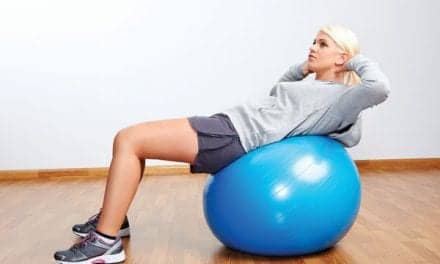Background
Abnormal joint mobility is a component of movement dysfunction.17 Joint mobilization techniques aim to restore the accessory (arthrokinematic) movements between joint surfaces (Figure 1).2 Joint mobilizations have been reported to influence a variety of joint structures.8,17
Neurophysiologic alteration in the cutaneous receptors, muscle spindles, and mechanoreceptor threshold has been reported to be an explanation for decreased pain, increased mobility, and increased strength after joint mobilization.4,8,17
Likewise, physical loading and unloading of joint cartilage may facilitate the flow of synovial fluid within the joint to enhance nutrition to the articular cartilage.12
Maitland7 described the passive, oscillatory, rhythmic movements to a joint by grades. There are four grades of mobilization (Figure 2):
- Grade I – small 1-2 mm amplitude motions in the first quarter (beginning) of the available joint translation
- Grade II – larger 2-4 mm amplitude motions in the first half of the available joint translation
- Grade III – larger 2-4 mm amplitude motions in the second half of available joint translation, into the end-range
- Grade IV – small 1-2 mm amplitude motions at the last quarter of the available joint translation, into the end-range
Grade I and II mobilizations are used to abate pain.7,8 Whereas, grade III and IV mobilizations are used to address tissue extensibility.7,8
Problem
Performing consistent joint mobilizations begin with the way the task is learned in the classroom. One can appreciate the cognitive elements of mobilization grades, but unless this knowledge is transitioned to the psychomotor skill in a clinical setting, it is of little use. Mastering a psychomotor skill requires purposeful practice with feedback,1 specifically visual feedback.2
Furthermore, concurrent feedback given while the learning task is in progress is critical.1 Yet, the limited devices available for quantitative feedback are either too cumbersome6,9,15 or measure force.2,10,11,13,14 Force is not the operative measure. Studies have reported a poor correlation between force and displacement.2,5,16
Studies have reported that skilled clinicians have good relative intra-clinician reliability, i.e. they could replicate their “force” application during joint mobilizations, but had poor to moderate reliability between clinicians.3,13
Solution
The Mobil-Aider is a transformative device designed to address the clinical issues of joint mobilization (Figure 3). The key innovation associated with the Mobil-Aider is the development of a device to quantify and compartmentalize the magnitude of joint translation.
This lightweight (13 oz), versatile, and cost-effective device uses LED feedback to provide both maximal (mode A) and real-time (mode B) quantification of the linear translation. The device design permits classic joint mobilization techniques to be used to minimize the learning curve.
A variety of specifically designed attachments permit the use of the device for the shoulder, elbow, wrist, knee, and ankle (figure 4). The quantified feedback increases the reproducibility of the intervention. Consistency will ensure the proper mobilization grade is administered and will enhance the patient outcome with regard to pain reduction and improved joint mobility.
Therapeutic Articulations LLC is the recipient of a phase 1 National Science Foundation Grant. The Mobil-Aider has received FDA approval is a class 1 exempt device and has a utility patent pending. For more information, visit Therapeutic Articulations LLC or email [email protected]
References
- Chang JY, Chang GL, Chang Chien CJ, Chung KC, Hsu AT. Effectiveness of two forms of feedback on training of a joint mobilization skill by using a joint translation simulator. Phys Ther. 2007;87:418-430
- deSouza MvS, Venturini C, Teixeira LM, Chagas MH, deResende MA. Force-displacement relationship during anteroposterior mobilization of the ankle joint. J Manipulative Physiol Ther. 2008;31:285-292
- Gorgos KS, Wasylyk NT, Van Lunen BL, Hoch MC. Inter-clinician and intra-clinician reliability of force application during joint mobilization: A systemic review. Manual Therapy. 2014;19:90-96
- Hanrahan S, Van Lunen BL, Tamburello M, Walker ML. The short-term effects of joint mobilizations on acute mechanical low back dysfunction in collegiate athletes. J Athl Train. 2005;40(2):88-93
- Lee RYW, Evans JH. Loads-displacement-time characteristics of the spine under posteroanterior mobilization. Aust J Physiother. 1992;38:115-123
- Lin HT, Hsu AT, An KN, Chang Chien JR, Kuan TS, Chang GL. Reliability of stiffness measured in glenohumeral joint and its application to assess the effect of end-range mobilization in subjects with adhesive capsulitis. Manual Therapy. 2008;13:307-316
- Maitland GD. Peripheral Manipulation. Boston: Butterworths-Heinemann, 1991
- Makosky H, Panicker S, Abbruzzese J, et al. Immediate effect of grade IV inferior hip joint mobilization on hip abductor torque: A pilot study. J Manual Manipul Ther. 2007;15(2):103-111
- McQuade K, Price R, Liu N, Ciol MA. Objective assessment of joint stiffness: A clinically oriented hardware and software device with an application to the shoulder joint. Novel Physiother. 2012;2(7):1-7
- Silvernail JL, Gill NW, Teyhen DS, Allison SC. Biomechanical measures of knee joint mobilization. J Manual Manip Ther. 2011;19(3):162-171
- Snodgrass SJ, Rivett DA, Robertson VJ. Manual forces applied during cervical mobilization. J Manipulative Physiol Ther. 2007;30:17-25
- Torzilli PA, Dethmers DA, Rose DE, Schryuer HF. Movement of interstitial water through loaded articular cartilage. J Biomech. 1983;16(3):169-179
- Tragord BS, Gill NW, Silvernail JL, Teyhen DS, Allison SC. Joint mobilization force and therapist reliability in subjects with knee osteoarthritis. J Manual Manip Ther. 2013;21(4):196-206
- Tuttle N, Jacuinde G. Design and construction of a novel low-cost device to provide feedback on manually applied forces. JOSPT. 2011;41(3):174-179
- Venturini C, Penedo MM, Peixoto GH, Chagas MH, Ferreira ML, deResende MA. Study of the force applied during anteroposterior articular mobilization of the talus and its effect on the dorsiflexion range of motion. J Manipulative Physiol Ther. 2007;30:593-597
- Witt DW, Talbott NR. In-vivo measurements of force and humeral movement during inferior glenohumeral mobilizations. Manual Therapy. 2016;21:198-203
- Yerys S, Makofsky H, Byrd C, Pennachio J, Cinkay J. Effect of mobilization of the anterior hip capsule on gluteus maximus strength. J Manual Manipul Ther. 2002;10(4):218-224








